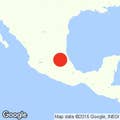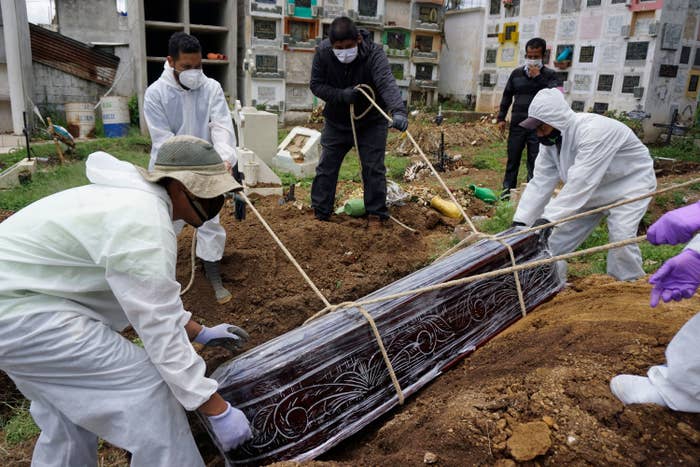
The journalists at BuzzFeed News are proud to bring you trustworthy and relevant reporting about the coronavirus. To help keep this news free, become a member and sign up for our newsletter, Incoming.
MEXICO CITY — At 5:48 in the morning on June 1, patient #10451 died in Guatemala’s only psychiatric hospital, where a cluster of COVID-19 cases was rapidly spreading. His body was taken to a cemetery in the capital city, where at least 62 other unidentified people have been buried since the pandemic began.
Their names are all recorded as “XX.”
The death of patient #10451 — the number given to him in documents from the hospital — made him just another statistic as the coronavirus started to take its toll on the Central American country of 17 million people.
But it wasn’t just in death that he was little more than a number. No one had ever known his real name, his birthplace, who his parents were, or even his age. That’s because patient #10451 spent almost all of his life institutionalized, first in an orphanage known for neglecting the children in its care, and then in a mental health institution that has been described as the most dangerous hospital in the world.
It is said that you die twice: Once when you take your final breath, and then when your name is said for the last time. In the case of patient #10451, he never even had a real name nor any loved ones to mourn him.
The coronavirus has killed more than 1 million people across the world. Most of these people have had their lives celebrated, whether it’s grieving relatives arranging a socially distant funeral, marking their death with a post on social media, or ensuring the publication of an obituary. For patient #10451, there are no cousins, no siblings, no parents on record. Not even a friend to ask about him.
It’s as if he had never even lived.
His case, made public by BuzzFeed News for the first time based on his medical files and interviews with current and former hospital employees, shows a life that slipped through the cracks even before the pandemic cut it short.
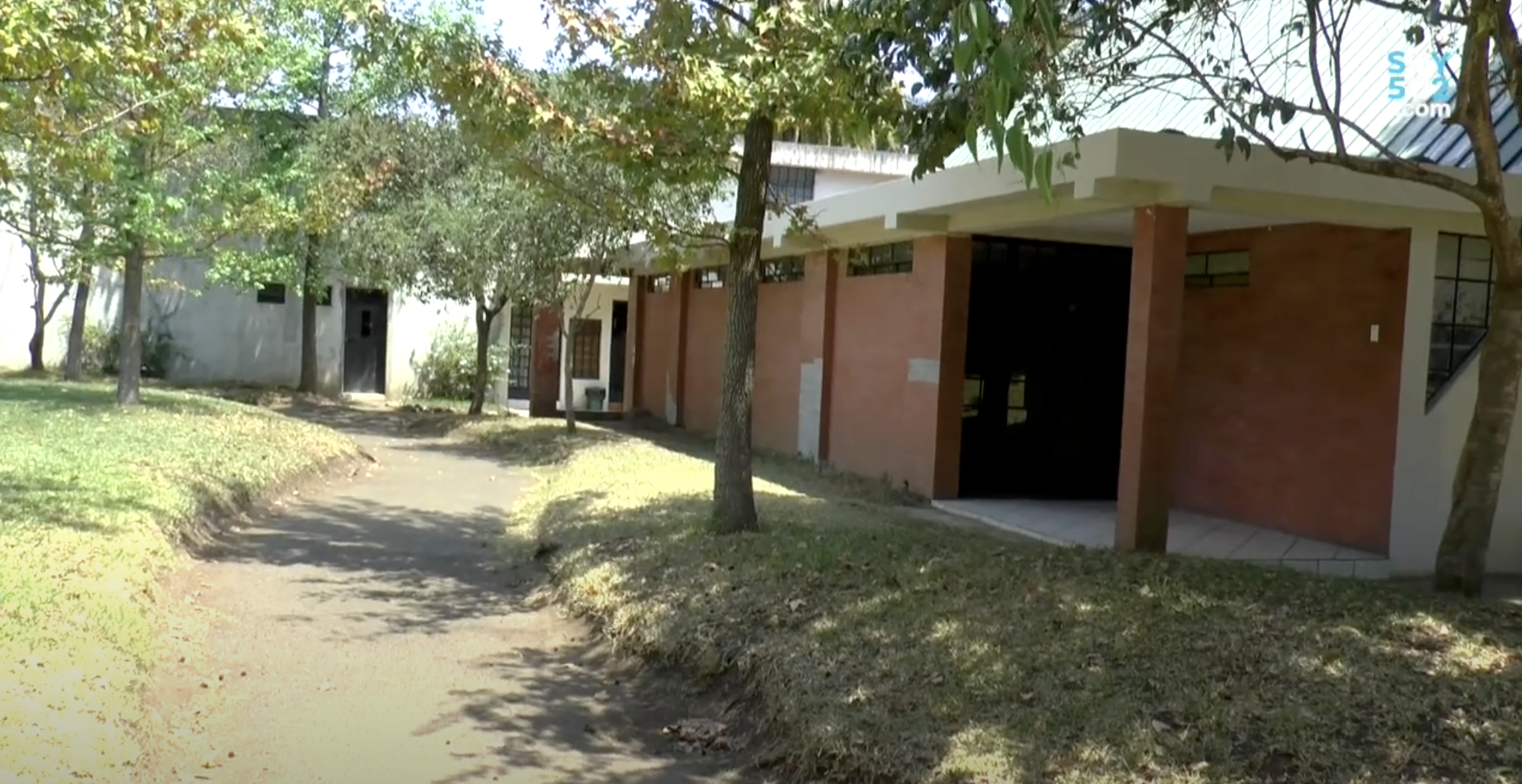
No one is even sure when he was born. The first available information about him dates to 1991, when the young boy — then possibly around 15 years old — was living in the Hogar Rafael Ayau orphanage in Guatemala City. On documents from the orphanage seen by BuzzFeed News, he appears to have been given a name: “Juan Ayau.” But that gives no inkling of his real identity — “Juan” is the Spanish-language equivalent of John, and “Ayau” is simply a reference to the orphanage. It’s no different from calling him John Doe.
Founded in 1857, Hogar Rafael Ayau became the national institution where abandoned children were sent. It quickly acquired a dubious reputation. It gained international notoriety after it emerged that hundreds of Guatemalans had been infected with syphilis without their consent in an experimental procedure by US doctors during the 1940s and 1950s. One of those patients — a woman named Marta Lidia Orellana — lived at the orphanage. Orellana would become one of the plaintiffs in the case against the experiments. In an interview with Guatemalan newspaper Prensa Libre, she recalled getting a series of injections in her spine while at the orphanage.
The reputation of the orphanage was permanently tarred; in 1996, after a series of negotiations, the state turned it over to the Eastern Orthodox Church, according to the institution’s website.
But far from becoming a refuge, the orphanage continued to be a minefield of abuses. It was hardly the kind of place where a young boy like Ayau would get the attention and care he needed.
Many of the children who lived there were likely abandoned by parents who were unable to feed them. With the highest rate of malnutrition in Latin America and persistently high unemployment rates, it is not surprising that child abandonment in Guatemala is common — there are 127 orphanages in the country.
A 1991 report by Americas Watch (now Human Rights Watch) and Physicians for Human Rights warned of allegations “of severe abuse” at Hogar Rafael Ayau. In 2016, the National Council for Adoptions revealed that many children there exhibited a “flat affect” and were “anxious while having contact with outsiders, and evasive.” Those who misbehaved were placed in solitary confinement or sent to the San José Seminary, where they were often starved by the staff or beaten by the priest.
The following year, at least 400 children continued to visit the orphanage, while about one dozen lived there full time. The state ordered its closure shortly after, citing invalid property records.
A document seen by BuzzFeed News reveals that a judge ordered Ayau to be moved to the Federico Mora mental hospital, also in the capital city, in 1991.
“The minor whose alleged name is ‘Juan Ayau’ should receive special treatment given his physical and mental state,” a local judge wrote to the director of Federico Mora.
There, a doctor described the boy as having Down syndrome.
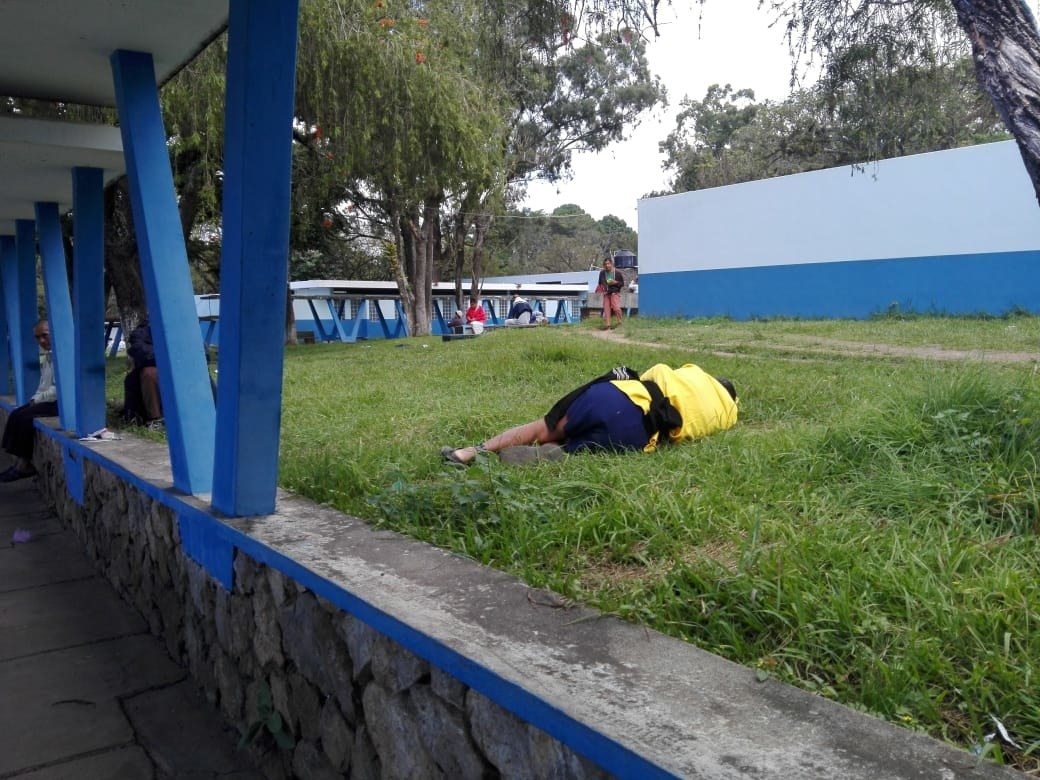
Conditions at Federico Mora were not much better than at the orphanage. Founded in 1890, the hospital burned down in 1960, killing more than 150 people. It has always been plagued by reports of overcrowding and abuse.
During his initial evaluation, Ayau was described as “calm, clean and with adequate clothing.” His hair was properly cut. “He smiles,” wrote a staffer on his record.
The years passed and Ayau remained there with no contact with the outside world. Patients remain essentially incarcerated unless a judge authorizes their release, even though most of them should not be institutionalized since they are stable and largely functional, according to Jonatan Natareno, a representative for people with disabilities at Guatemala’s Human Rights Commission.
Ayau’s emotional state appeared to deteriorate over time. In 2008, he was described as “obstinate” and likely to throw tantrums, and he was prescribed a new regimen of medication. “He throws himself on the ground when asked to return to the dorms,” reads his Federico Mora file. Staffers gave him candy “as positive reinforcement.”
That year, the mother of another patient took Ayau home. However, “the patient was unable to adapt to the family’s habits, so he returned to the hospital shortly after,” according to his file.

The file provided to BuzzFeed News is incomplete, with large gaps in Ayau’s record. There appear to be no observations for five years, until 2013, when a sheet with illegible squiggles — part of a cognitive test apparently performed by Ayau — was added to the file. His treatment included medication that is typically prescribed to patients with epilepsy, bipolar disorder, and other conditions, and which was administered three times a day.
“Patient is sociable with the staff,” read a note at the time. “He likes getting involved in musical activities. … He struggles to communicate verbally.”
A hospital employee, who requested that their name be withheld because they were not authorized to speak to the press, said other patients had bullied Ayau, taking his belongings from him and taunting him with them.
A former hospital employee who also requested anonymity remembered Ayau as playful and affectionate. He liked to imitate nurses and guards at the hospital; whenever an employee made a phone call in the courtyard, he would feign taking a cellphone out of his pocket and start walking around, speaking into it with a serious, important demeanor. Ayau often threw himself onto the ground crying when he wanted attention because “he really craved hugs.”
The former employee resigned earlier this year. They said they would often demand authorities in the government or in the hospital that patients be given basic rights. This would sometimes yield a small victory before conditions returned to the status quo a week later. The Health Ministry, which is responsible for Federico Mora hospital, did not respond to a series of questions from BuzzFeed News.
In 2012, the Inter-American Commission on Human Rights filed a request for a precautionary measure, a mechanism that aims to prevent irreparable harm to people, arguing that some patients at Federico Mora were housed with others who had been charged with criminal offenses, forcing the former to endure abuse. Two years later, the BBC called Federico Mora “the most dangerous hospital in the world.”
In a news report, patients are seen lying on the ground in the courtyard, barefoot, under a punishing sun. Uniformed guards keep watch over them. Inside the living quarters, paper-thin and broken mattresses are placed on top of metal frames serving as beds, some covered in puddles of fresh urine. According to the BBC, the patients were all sedated.
The IACHR noted in a report published in 2017 that the hospital was unsanitary, and that solitary confinement rooms were used on a regular basis — a wildly inappropriate place for a man like Ayau to be kept.
“Violence and abuse are used by medical staff as a ‘tool of control,’ and it has an aggravated effect on overmedicated patients, who are unable to protect themselves,” reads the report.
Ninety percent of the patients “should not even remain at the institution, and, therefore, they too are subjected to arbitrary deprivation of liberty,” it adds.
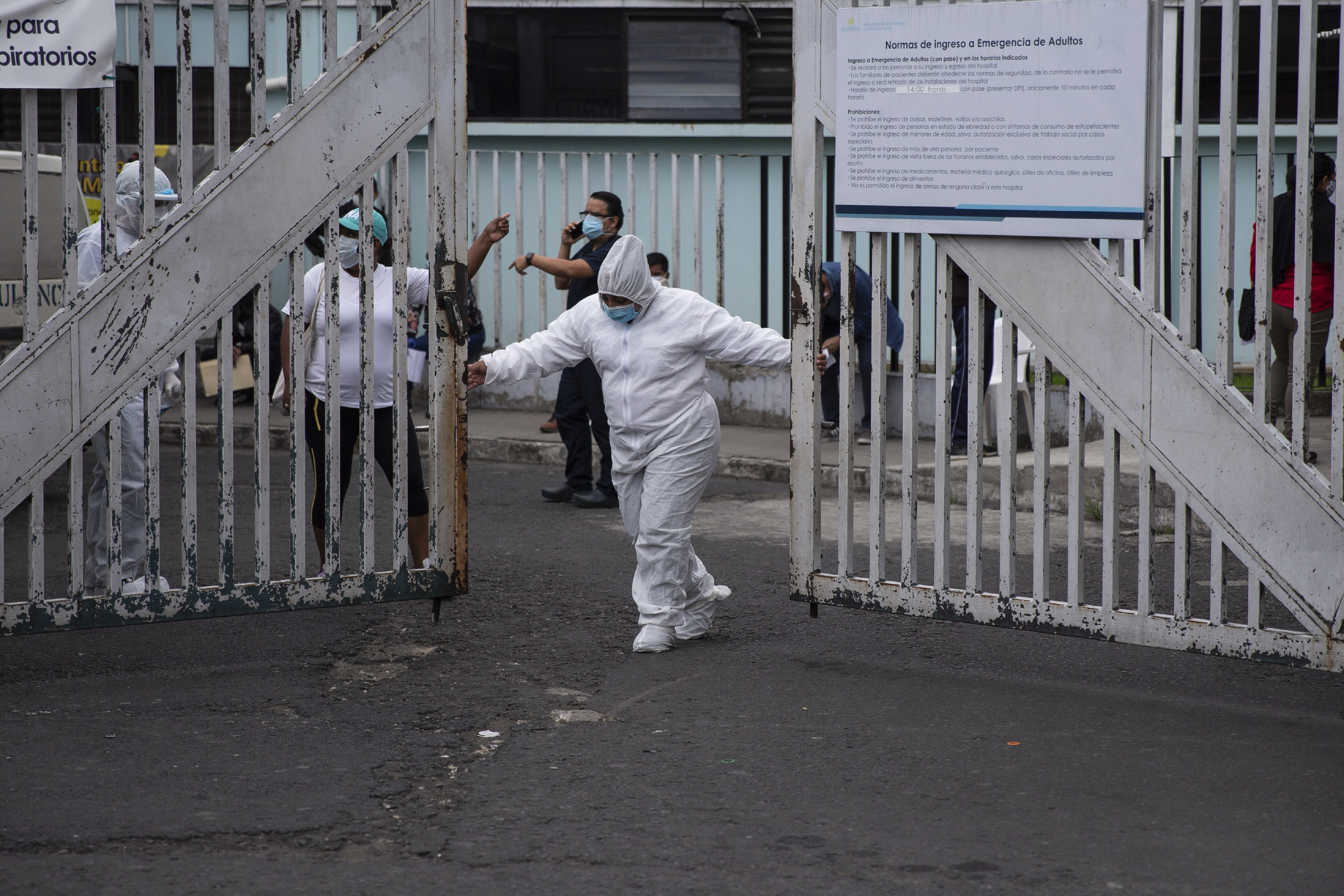
Outside the hospital gates, Guatemala was in turmoil. Civil war ravaged the country in the 1990s. Corruption scandals saw senior politicians imprisoned. Poverty drove tens of thousands of people to the US.
For Ayau, nothing ever changed. He endured monotonous days in the ward for chronic patients. It never mattered if it was Tuesday or Saturday; he didn’t receive any visits, anyway, according to employees.
On April 2, as the coronavirus swept across the country, Ayau became feverish and developed pneumonia. When his cough worsened and he began having trouble breathing, he was transferred to the San Juan de Dios General Hospital in Guatemala City.
The hospital, one of the largest in Guatemala, was rapidly becoming overwhelmed. Employees complained they did not have personal protective equipment and were afraid of getting infected, according to local news reports.

The following month, the Guatemalan Human Rights Commission released images of the hospital halls, showing patients lying close together, nearly naked, with the floor underneath them strewn with trash. The visitor from the office reported flies swarming around as three resident doctors and four nurses treated nearly 100 patients. In one image, cadavers in black plastic bags lie on hospital beds in a narrow hallway.
Ayau’s COVID-19 test came back negative, and he was sent back to Federico Mora. In interviews with BuzzFeed News, employees questioned whether it was a false negative. Upon his return, he was isolated for 16 days. Eventually, at least 126 of the 321 patients would test positive for COVID-19 at the mental health institute. In May, Disability Rights International sent an urgent appeal to the United Nations’ expert for the rights of persons with disabilities, warning of “imminent risk of sickness and death as a result of the authorities’ reckless exposure of detainees to the spread of the virus COVID-19.”
Ayau died the following month.
Only then did staff at Federico Mora realize that “Juan Ayau” was a nickname. On his death certificate, the boxes requesting information about him are mostly blank. The only recorded details are: single, 44, racially mixed; cause of death: respiratory failure, atypical pneumonia, convulsive episode.
“I felt like a cockroach,” the current employee at the hospital told BuzzFeed News. He had seen patient #10451 in the courtyard and had exchanged pleasantries with him for decades, but he only now realized he had known nothing about him.
“He spent so much time there, and I never learned much about him.”

